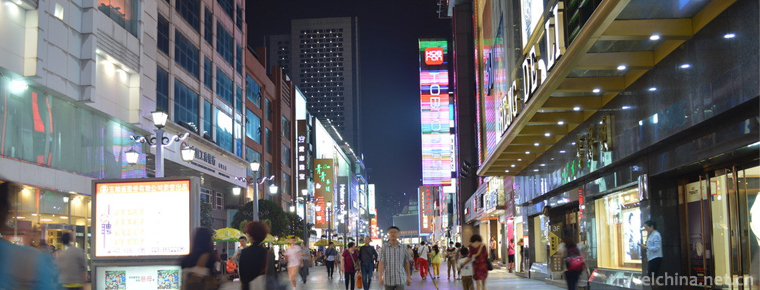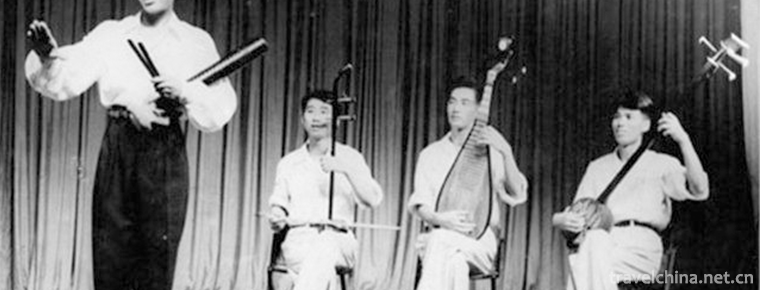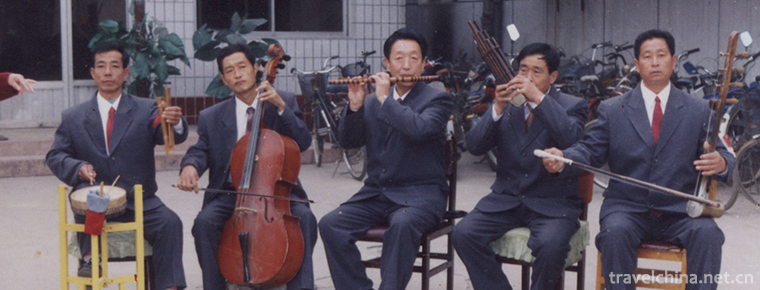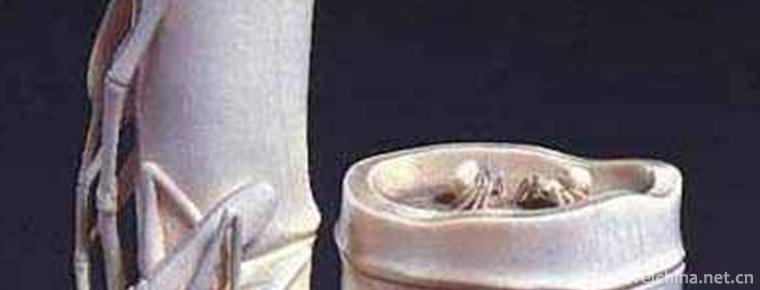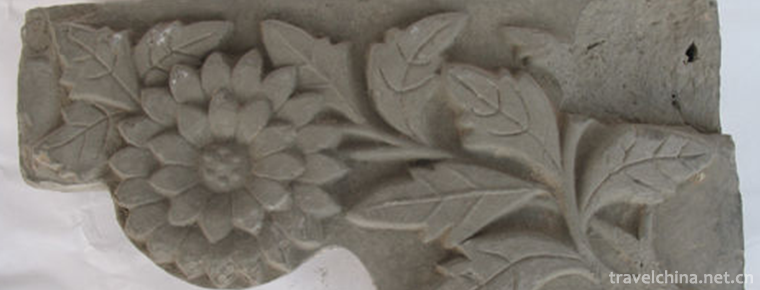Nanxun ancient town Scenic Area
Nanxun Ancient Town is located in Nanxun District of Huzhou City, at the junction of Jiangsu, Zhejiang and Shanghai provinces. Ming and Qing Dynasty is a famous silk town in the south of the Yangtze River. It is an ancient town with abundant human resources and a combination of Chinese and Western architecture.
Nanxun Ancient Town Scenic Area covers an area of 34.27 square kilometers . The protection area of Nanxun Ancient Town ranges from the east to the east of Yiyuan Site, from the west to Yongan Street, from Jiayetang Library Building and Xiaolian Village in the South and from the north to 100 buildings. The protected area is about 168 hectares, of which 88 hectares are the key protected areas. The tourist attractions are divided into three blocks. The first is Nanxun tourist attractions enrichment area, where Zhang Shiming's former residence and Liu's ladder are distributed. The second is a central scenic spot composed of Xiaolian Zhuang, Jiayetang, Wenyuan and other scenic spots. The third block is the Northeast block with Zhang Jingjiang's former residence and Baijianlou as the main building to the east of Dongjie Street.
Nanxun Ancient Town is known as "the land of culture" and "the land of poetry and books". There have been many famous figures, such as Zhang Jingjiang, the curious man of the Republic of China, a stone inscription of the initiator of Xiling Printing Society, and Xu Chi, a famous poet and essayist.
In June 2001, Nanxun Zhang's old residence complex was awarded the fifth batch of national key cultural relics protection units. In 2005, Nanxun Ancient Town was awarded the second batch of famous Chinese historical and cultural towns , national 5A tourist attractions and other honorary titles , becoming the first national 5A tourist attractions in Huzhou City.
The discovery of Hongcheng, Huacheng, Shangshi and other ancient cultural sites in Nanxun proves that clan tribes in primitive society thrived as early as the Neolithic Age.
According to legend, Xia Yu governed the water, dividing the world into nine states, and Nanxun jurisdiction belongs to Yangzhou.
The Spring and Autumn Period and the Warring States Period belonged to Wu, Yue and Chu successively. In 333 B.C., Chu took it as the feudal city of the Spring Shenjun, and began to build Zicheng County. Nanxun was under the jurisdiction of Zicheng County.
In the three years of Taikang in the Western Jin Dynasty (AD 282), it was divided into Dongxiang County in Wucheng County and Dongxiang County in Dongqian County.
In the four years of the Southern Dynasty, Song and Yuan Hui, Dongqian County was changed to Dongan County, which was renamed Dongqian County the following year. In the ninth year of Kaihuang in Sui Dynasty, the county moved eastward and was merged into Wucheng County.
Song Taiping rejuvenated the country for seven years. It was divided into 15 townships in southeastern Wucheng County and settled in Gui'an County.
In the first year of the Republic of China (1912), Wucheng and Gui'an were merged into Wuxing County. Now Nanxun belongs to Wuxing County.
On May 2, 1949, Nanxun was liberated, and today Nanxun is under Wuxing County.
In September 1993, Huzhou City was divided into three working committees, namely, Urban District, Nanxun District and Linghu District. Nanxun Town belongs to Nanxun District.
On June 30, 2011, the Nanxun Ancient Town Management Committee of Huzhou was formally established as a local government agency to lead the company in protecting, utilizing, planning, construction and management of the ancient town.
Nanxun Ancient Town Scenic Spot was officially examined and approved as National AAAAA Class Tourist Spot in July 2015.
Nanxun Ancient Town Scenic Area covers an area of 34.27 square kilometers, from the east to the east of Yiyuan Site, from the west to Yongan Street, from Jiayetang Library and Xiaolian Zhuang to the south, and from the north to 100 buildings. The ancient town is composed of Nanshi River, Dongshi River, Xishi River and Baoshan River, with many rivers crisscrossing. Streets and residential buildings are distributed along the river, along the river, and connected in series with Nandong Street and Nanxi Street, forming a cross-shaped pattern. Streets and alleys have complete texture, and the river system is basically preserved. Commercial streets are formed on both sides of the cross river. They have the style and features of Jiangnan water towns, which are built along the river, as well as many high-quality private residences and gardens in the south of the Yangtze River. They form the block characteristics of small bridges, water homes and residential gardens.
Nanxun has been an important economic and cultural town in Huzhou since ancient times. Since the Song Dynasty, Nanxun has been famous for its high-quality raw silk. During the Ming and Qing Dynasties, Nanxun became a typical silk town in Jiangnan, and the silk produced in Seri became a designated raw material for Royal weaving. In modern times, with the opening of Shanghai as an opportunity, Nanxun was influenced by European and American culture earlier. Silk merchants rose rapidly, and a number of important historical figures such as Liu Yong, Gu Qinlin, Pang Yuanji, Zhang Jingjiang and Jincheng emerged. Nanxun Ancient Town has five national key cultural relics protection units, including Jiayetang Library, Xiaolianzhuang, Nanxun Zhang's old house complex, Zunde Hall, Grand Canal (Nanxun section of the Jiangnan Canal, Nanxun Silk Industry Guild Hall and Silk Merchant Building), Pang's old house, Nanxun Grain Station Granary, Tongjin Bridge, Hongji Bridge, Yingyuan, Shuyuan Fast Pavilion, Dong. Shidetang, Shoujuntang and other 11 municipal heritage protection units, Xingfu Bridge, Tongli Bridge, Xinmin Bridge and other three municipal cultural preservation sites, livelihood Mihang, Liu Jingdetang site, Zhou Qingyun old residence and other 21 historical buildings. The traditional dwellings in the ancient town are elegant and elegant, with unique connotation. In the traditional Chinese architectural form, the large house gardens boldly and skillfully infiltrate and integrate the western architectural style, forming a unique architectural art of Jiangnan residence, which combines Chinese and Western styles.
On June 30, 2011, the Nanxun Ancient Town Management Committee of Huzhou was formally established as a local government agency to protect, utilize, plan, construct and manage the ancient town. From the point of view of protection and utilization, this paper systematically combs the real estate, ancient buildings and residents of ancient towns, and forms a more detailed database including a brochure, a set of drawings and a software, which lays a solid foundation for the protection and utilization of ancient towns. Nanxun Ancient Town has invested nearly 650 million yuan, according to the principle of "repairing the old as before, renovating the old as before", to promote the renovation of ancient buildings. In June 2014, Xiaolianzhuang Xinde Hall renovation project was officially put into construction. In 2015, the renovation works of Jinzhai, Xiaolianzhuang Phase II and Zhangjingjiang Phase II will continue to revive these ancient buildings. In order to coordinate the facilities in the scenic area with the original appearance of the ancient town, Nanxun ancient town also carried out exterior facade renovation of 600 houses, renovation and upgrading of important nodes such as Guanghui Palace and the entrance of 100 buildings, renovation and repair of bridges such as Tai'an Bridge and Sanqing Bridge, and completed more than 10,000 square meters of stone pavement. Nanxun Ancient Town takes the inheritance and promotion of ancient town culture as a long-term systematic project by compiling books, establishing professional and systematic liaison meetings and research societies.















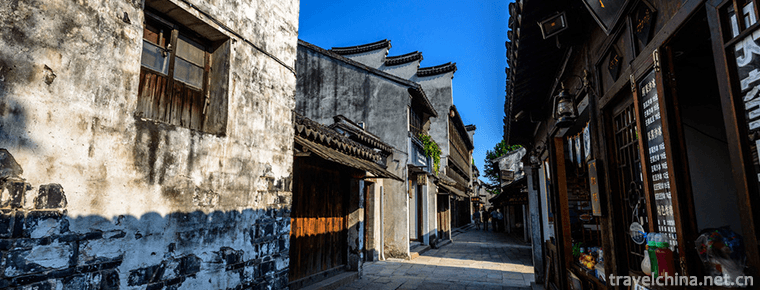
-
Chunxi Road
Jinjiang District Chunxi Road street, Chengdu, Sichuan, China.
Views: 98 Time 2018-10-02 -
Daocheng County
Daocheng county is located in the southwestern edge of Sichuan Province, south of Ganzi. Located in the southeast of the Qinghai Tibet Plateau, the eastern side of Hengduan Mountains..
Views: 101 Time 2018-10-12 -
Firing Techniques of Fengxi Porcelain
Fengxi Porcelain Firing Technology, a local traditional technology in Fengxi District, Chaozhou City, Guangdong Province, is one of the national intangible cultural heritage..
Views: 771 Time 2019-04-29 -
Haimen mountain song
Haimen Mountain Opera is a traditional opera popular in Haimen area of Nantong, Jiangsu Province. It originated from Haimen Mountain Song and developed into .
Views: 321 Time 2019-05-02 -
Wooden Fish Songs
Muyu song is short for Muyu, also known as Touyu song. It is one of the traditional rap and singing arts in Guangdong Province and belongs to the system of Tanci. It is popular in the Pearl River Delt.
Views: 151 Time 2019-06-06 -
Four strands
Four-strand string, also known as four-strand string, two-strand string, five-tune string and five-tune tune tune tune, is one of the ancient traditional local operas in China. It originates from Julu.
Views: 388 Time 2019-06-16 -
ivory carving
Ivory carving refers to the carving process and its products with ivory as the material. It is an ancient Chinese traditional art, folk arts and crafts. Ivory is the strongest part of an elephant. It .
Views: 110 Time 2019-07-06 -
Brick and plastic
Brick sculpture is the handicraft of folk craftsmen. It is made of mud into various animal models. Some of the images are realistic, but more are romantic and exaggerated ways of expression, the shape.
Views: 130 Time 2019-08-10 -
Cheongsam Qipao anecdotes
Helen foster snow is the widow of snow, the author of a journey to the West. This book records his meeting with Mao Zedong in Yan'an cave dwelling period. Helen was only 23 when she first went to Shanghai in 1931. Helen's good friend Polly went all over the United States to.
Views: 158 Time 2020-12-11 -
Panzhihuas primary industry
In 2018, the total output value of agriculture, forestry, animal husbandry and fishery in Panzhihua was 7.027 billion yuan, an increase of 4.2%. Among them, agricultural output value was 4.434 billion yuan, an increase of 5.2%; forestry output value was 108 million yuan, an increase.
Views: 323 Time 2020-12-14 -
Luzhou natural resources
The total amount of water resources in Luzhou is 6.657 billion cubic meters per year. The groundwater reserves are rich, reaching 1.065 billion cubic meters per year, among which Xuyong and Gulin counties in the south are the richest. The structural fissure water in the south.
Views: 345 Time 2020-12-14 -
Deyang local culture
On April 2, 2013, the Information Office of the people's Government of Deyang City, Sichuan Province announced the city logo of Deyang to the public. Among them, "the source of ancient Shu, the city of heavy loading" has become the main logo of Deyang City.
Views: 333 Time 2020-12-14
